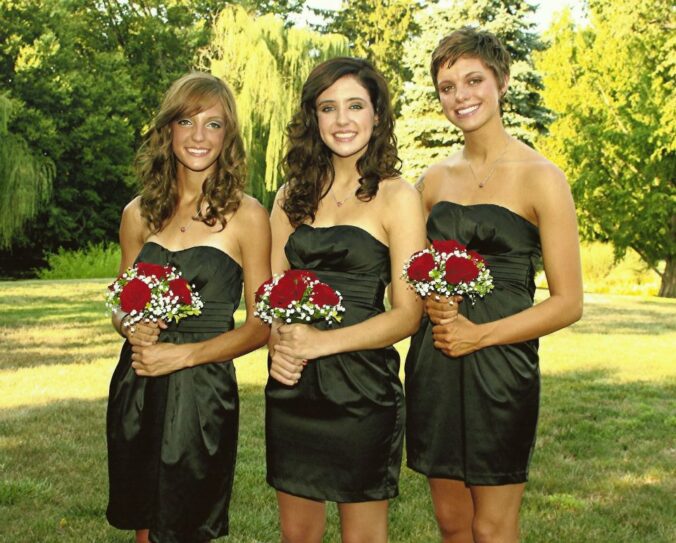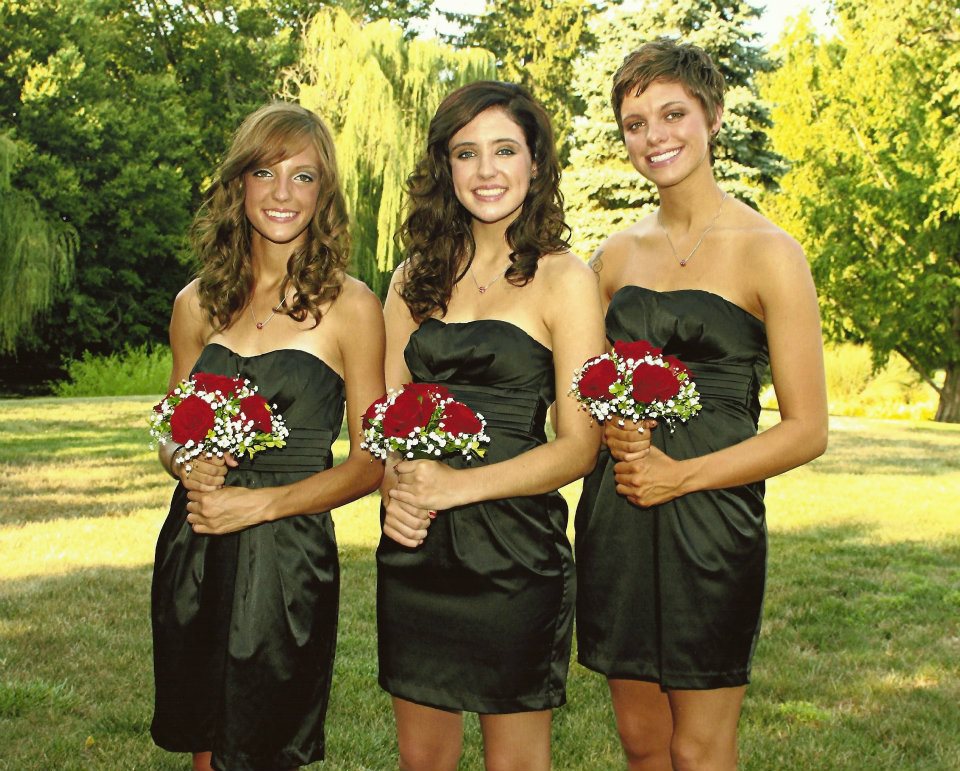Why? Because sad shoulder blades are the number one cause of my headaches.
Well, I don’t know that they’re sad, but they’re definitely depressed.
The fitness industry has raved about the lower trapezius fibers for YEARS now, and with good reason! They are consistently weak in people from all different backgrounds.
The problem arises in the methods to spot and fix it your low trap weakness.
How do I know?
As is probably already clear to you, assessment is a vital component of training. The first step is to spot the problem in the first place. This is where your suspicions are initially raised.
Look at the following picture to get your feet wet.
What do you see? My friend on the right has a pair of very long upper traps. Notice how long her neck looks?
Couple that with a strong forward head posture. This misalignment makes me think her pelvis is out of whack, too, and I would guess it’s a posterior pelvic tilt with an anterior sway (a.k.a. swayback). For the sake of brevity, we won’t be addressing the pelvis, but know that it will be instrumental in making a correction stick. After all, if it can influence temporomandibular dysfunction (Hruska 2002; Hruska 1997), why wouldn’t it be able to influence more proximal at the t-spine, c-spine, and shoulder girdle? Remember, it’s a kinetic chain. Everything is connected.
After we’ve noted a problem, we want to examine motion since how things look when they’re moving ultimately holds more weight in our diagnosis.
Before we do the test, what do you expect to see? The head is forward and the shoulders are very depressed, meaning upper trap is constantly on stretch. Given this, do you think it’s going to allow for full cervical rotation? My guess is no.
There are two different tests I’m doing in the following video. The standard cervical rotation test is the first one, and since my motion was limited, I didn’t pass. I want to find out why, so I retest, this time making the shoulders a non-issue.
Seeing this flat, downward pointing line formed by the top of the upper traps shows me that those shoulders are low. This leads me to believe the muscles connecting the neck and scapula are on stretch. The next step is to put it on slack to see if it truly is the restricting factor. If it is contributing to the problem, the test should improve. To do this, the tester grabs my arms and shrugs my shoulders up, then asks me to repeat the test.
Would you look at that? It got better! Since getting the chin over the clavicle (about 80 degrees) is considered “normal”, it’s actually better enough to be considered within normal limits, telling us that those slumped shoulders are not just a contributing factor, but the factor entirely responsible for the limitation.
Now that we have a good idea of what’s going on, we can get to fixing it!
Fixing Your Slumped Shoulders
We need a way to get the scapulae to stay supported since, sadly, you can’t just pay someone to follow you around and hold your shoulders up. Strengthening the serratus anterior as well as the upper, middle, and lower trapezius will help.
Since the lower trap depresses the scapula, it seems counterintuitive, but I urge you to think in multiple dimensions. Low trap is the strongest external rotator of the scapula. Likewise, the problem in this case isn’t just depression, but mostly downward rotation. The glenohumeral joint muscles are going to stiffen up to try to get some stability into the shoulders, and the trapezius will directly oppose that.
The following are a few exercises that will strengthen my upper back, restoring normal kinematic function and relieving the muscles that are causing my headaches. I was very surprised at how difficult it was to do shrugs when I first started retraining this pattern.
The Scaption w/Shrug is a good exercise to throw in the warm up. It helps you dial in the right pattern and activate your upward rotation.
The biggest issue for making the correction will be the execution of your training.
My favorite pattern for fixing slumped shoulders is overhead pressing, permitting that the client can safely get overhead. He or she will want to fall back into their bad patterns, however, so I’ve included two videos to show you what they want to do and what they need to do (try to disregard my postural scoliosis). You will probably have to manually put them into the right position until they figure out what it feels like.
I also like carries because you can train the scapulae isometrically. You can do these unilaterally (suitcase carry), bilaterally (farmer’s carry), or overhead (waiter’s walk). The following video shows you how the scapulae should sit when the weight is held down low.
Programming
So what do I do with this information? I mentioned it earlier, but for starters, throw the scaption w/shrug into your warm up.
Once your warm up is done, start training. I don’t know where slumped shoulders fits into your particular problem’s list, but if you have spinal instability problems, start with unilateral pressing and/or unilateral carries. I had great success using a farmer’s carry as my main exercise to get a training effect with unilateral overhead pressing as an accessory exercise to be very corrective for my spine and my shoulder.
It’s worth stating that the shoulders won’t get fixed if the spine is unstable, so make sure your programming and coaching is on point! If something is too difficult, regress it. A cue that you may find yourself using a lot is to keep the chin back and down; a protruding chin screams “spinal instability”. You want to press from a stable base. You wouldn’t shoot a cannon from a row boat, would you?
Now go take your exercise Prozac and fight off your depression.
If you have any questions, put them on the blog or email me!


Add some color to this commentary.